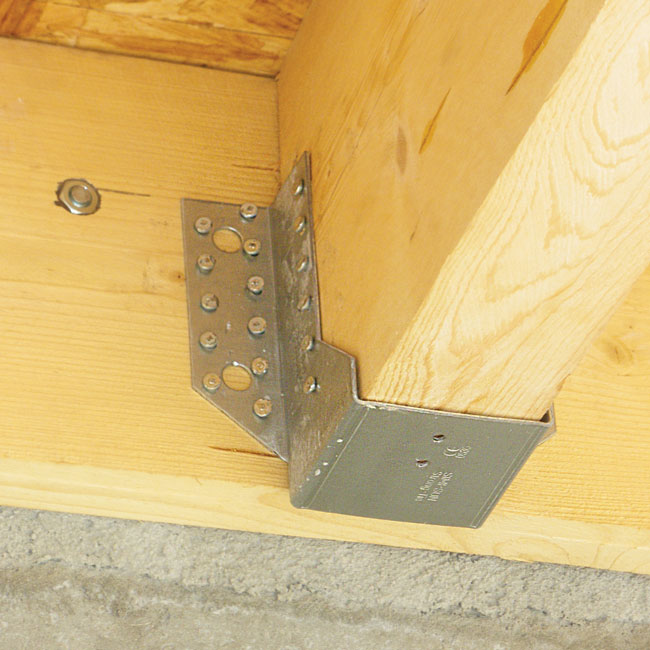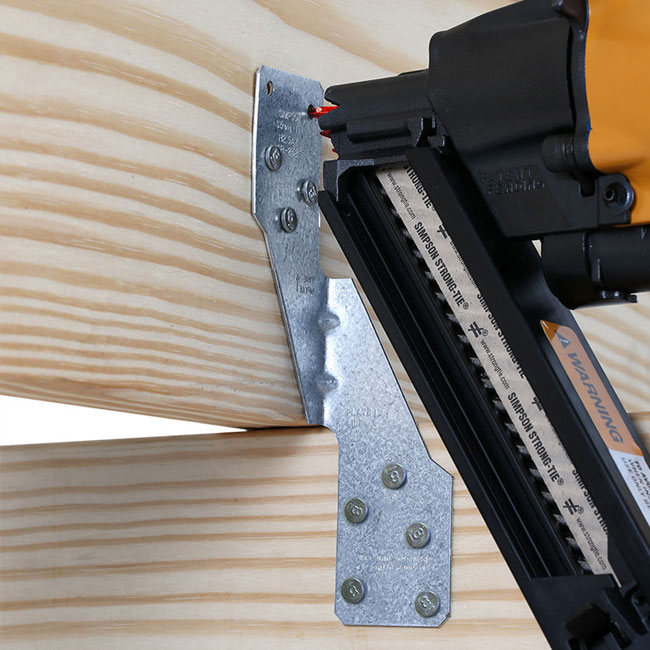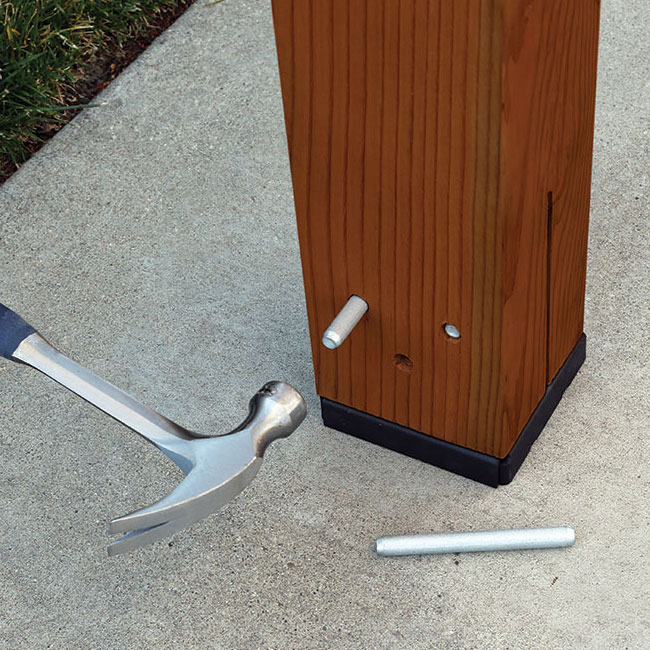Corrosion Information for Fasteners
Understanding the Corrosion Issue
Many environments and materials can cause corrosion including ocean salt air, fire-retardants, fumes, fertilisers, preservative-treated timber, de-icing salts, dissimilar metals and more. Steel fasteners could corrode and lose load-carrying capacity when installed in corrosive environments or when installed in contact with corrosive materials.
The many variables present in a building environment make it impossible to accurately predict if, or when, corrosion will begin or reach a critical level. This relative uncertainty makes it crucial that specifiers and users are knowledgeable of the potential risks and select a product suitable for the intended use. It is also prudent that regular maintenance and periodic inspections are performed especially for outdoor applications.
It is common to see some corrosion in outdoor applications. Even stainless steel can corrode. The presence of some corrosion does not mean that load capacity has been affected or that failure is imminent. If significant corrosion is apparent or suspected, then the timber, fasteners and connectors should be inspected by a qualified engineer or qualified inspector. Replacement of affected components may be appropriate.
Some timber-preservative chemicals and fire retardant chemicals and retentions pose increased corrosion potential and are more corrosive to steel connectors and fasteners than others. Testing by Simpson Strong‑Tie has shown that Alkaline Copper Quaternary-Type D (ACQ-Type D) is more corrosive than Copper Azole Type C, Micronised Copper Azole, and Chromated Copper Arsenate-Type C (CCA-C). At the same time, others have shown that the inorganic boron treatment chemicals, specifically SBX-DOT, is less corrosive than CCA-C.
Due to the many different chemical treatment formulations, chemical retention levels, moisture conditions and regional formulation variants, selection of fasteners has become a complex task. We have attempted to provide basic knowledge on the subject here, but it is important to fully educate yourself by reviewing our technical bulletins on the topic (strongtie.com/info) and also by reviewing information, literature and evaluation reports published by others.
Galvanic Corrosion — Galvanic corrosion occurs when two electrochemically dissimilar metals contact each other in the presence of an electrolyte (such as water) that acts as a conductive path for metal ions to move from the more anodic to the more cathodic metal. In the galvanic couple, the more anodic metal will corrode preferentially. The Galvanic Series of Metals table provides a qualitative guide to the potential for two metals to interact galvanically. Metals in the same group (see table) have similar electrochemical potentials. The farther the metals are apart on the table, the greater the difference in electrochemical potential, and the more rapidly galvanic corrosion will occur. Corrosion also increases with increasing conductivity of the electrolyte.
Good detailing practice, including the following, can help reduce the possibility of galvanic corrosion of fasteners:
- Use fasteners and metals with similar electrochemical properties
- Separate dissimilar metals with insulating materials
- Ensure that the fastener is the cathode when dissimilar metals are present
- Prevent exposure to and pooling of electrolytes
Simpson Strong‑Tie General Recommendations
Simpson Strong‑Tie has evaluated the AU/NZ Hazard Categories and atmospheric corrosion zones and developed from that evaluation an integrated set of corrosion resistance recommendations (see Integrated Corrosion Resistance Recommendations table on page 23). The recommendations address the coating systems and materials used by Simpson Strong‑Tie for connector and fastener products.
Dry service (or damp service) environments lead to timber moisture contents less than or equal to 19%. The corrosion potential, even in chemically treated timber, is reduced in these conditions. At the same time, outdoor environments are generally more corrosive to steel, either because the moisture exposure is elevated (greater than 19%), the treatment chemical retention level is higher than for interior service, or the metal is directly exposed to the weather and airborne agents.
Types 316/305/304 stainless steel, copper, silicon bronze and hot-dip galvanised are the most effective protection against corrosion risk. Type 316 is the best choice for salt marine and chloride containing environments, regardless of treatment chemicals or timber species. If you choose to use hot-dip galvanised, mechanically galvanised, double-barrier coated or Quik Guard coated fasteners on outdoor projects (e.g. a deck), you should periodically inspect the fasteners or have a professional inspection performed and regular maintenance is a good practice. See the Corrosion Resistance Classifications Table for the Simpson Strong‑Tie assessment of the corrosion resistance associated with materials and coatings and an appropriate level of corrosion resistance for various environments.
Simpson Strong‑Tie does not recommend painting stainless steel fasteners or hardware. The reason behind this recommendation is that sometimes painting can facilitate corrosion. Stainless steel is "stainless" because it forms a protective chromium oxide film on the surface by passive oxidation with air. The paint film on the stainless steel surface may be imperfect or it can be injured during service, and in either case the metal may be exposed. Microscopic sized film imperfections and scratches facilitate collection of dirt and water that can be stagnant and degrade or block the passive formation of the protective chromium oxide film. When this happens crevice corrosion can initiate. Crevice corrosion eventually becomes visible as a brown stain or red rust. This is the reason that painting usually does not improve corrosion resistance of stainless steel.
Due to the many variables involved, Simpson Strong‑Tie cannot provide estimates of service life of connectors and fasteners. We suggest that all users and specifiers obtain recommendations of corrosion from the treated timber supplier for the type of timber used. As long as Simpson Strong‑Tie recommendations are followed, Simpson Strong‑Tie stands behind its product performance, and our standard warranty applies.
Structural Connections

Unmatched Quality from the Truss to the Foundation
With nearly 60 years of field and R&D experience, Simpson Strong-Tie® timber connectors are manufactured to the industry's highest standards. From framing angles to straps to heavy-duty joist hangers, we offer the most diverse product line so that you have the right product for the job.
Simpson Strong-Tie® connectors offer unmatched quality with laboratory and field testing, and are backed by our uncompromising commitment to customer service. As the company that built the connector industry, you can count on Simpson Strong-Tie® to work closely with builders, engineers and building officials to deliver innovative, building code-compliant solutions to help build safer, stronger structures economically. Download the Structural Connectors Overview Flyer.
Timber Connectors
From testing to service to availability, everything we do is engineered to ensure your project's success. With every product, you know you are getting the quality, value, service and on-time delivery that we have built our reputation on for the past 60 years.
From straps and ties to joist hangers and much more, Simpson Strong-Tie® structural connectors increase the strength and safety of timber-frame structures. Each connector is unique to Simpson Strong-Tie and is designed for specific applications without the need to adapt metal plating to suit a connection.
Steel Frame Connectors
From fully tested and engineered connectors and clips Simpson Strong-Tie® provides comprehensive structural solutions for cold-formed steel construction. From steel-to-steel connections to full-scale lateral solutions and curtain wall connectors, we remain committed to developing new technology that helps to advance the cold-formed steel industry.
Find out how Simpson Strong-Tie timber connectors can help you build the right way every day. Download the Cold-Fromed Steel Construction Connectors Catalogue.


